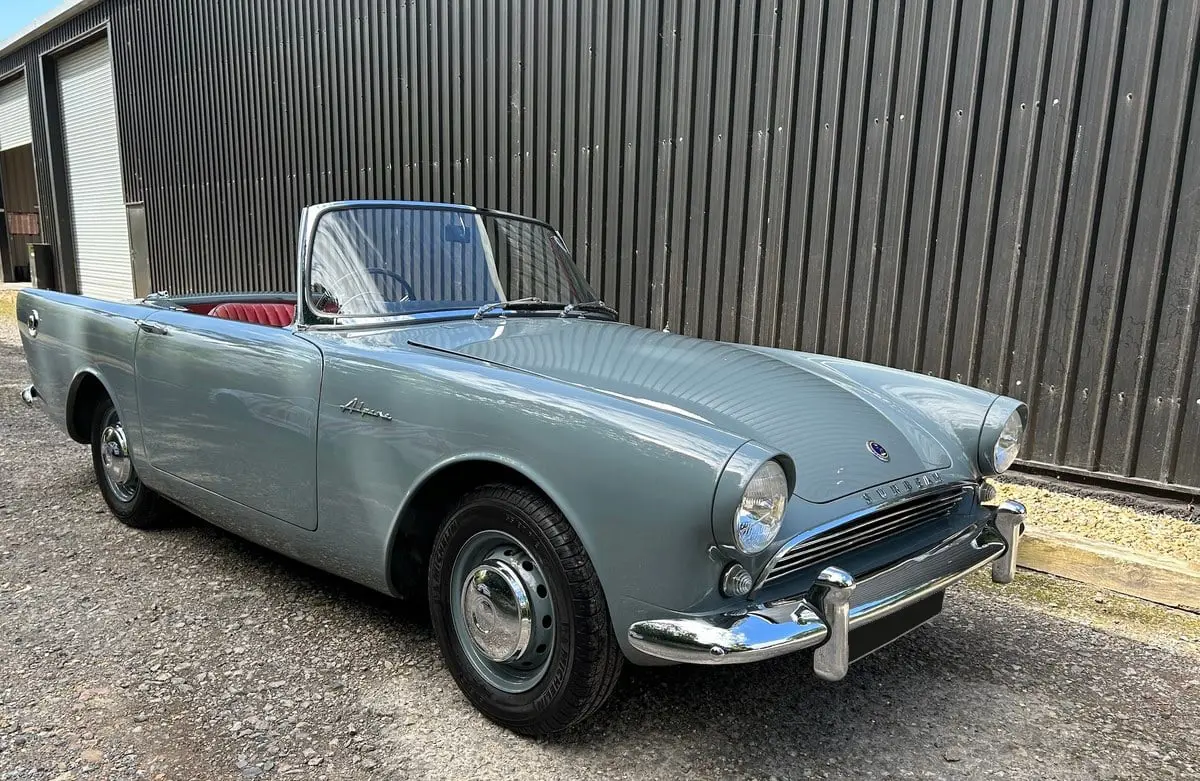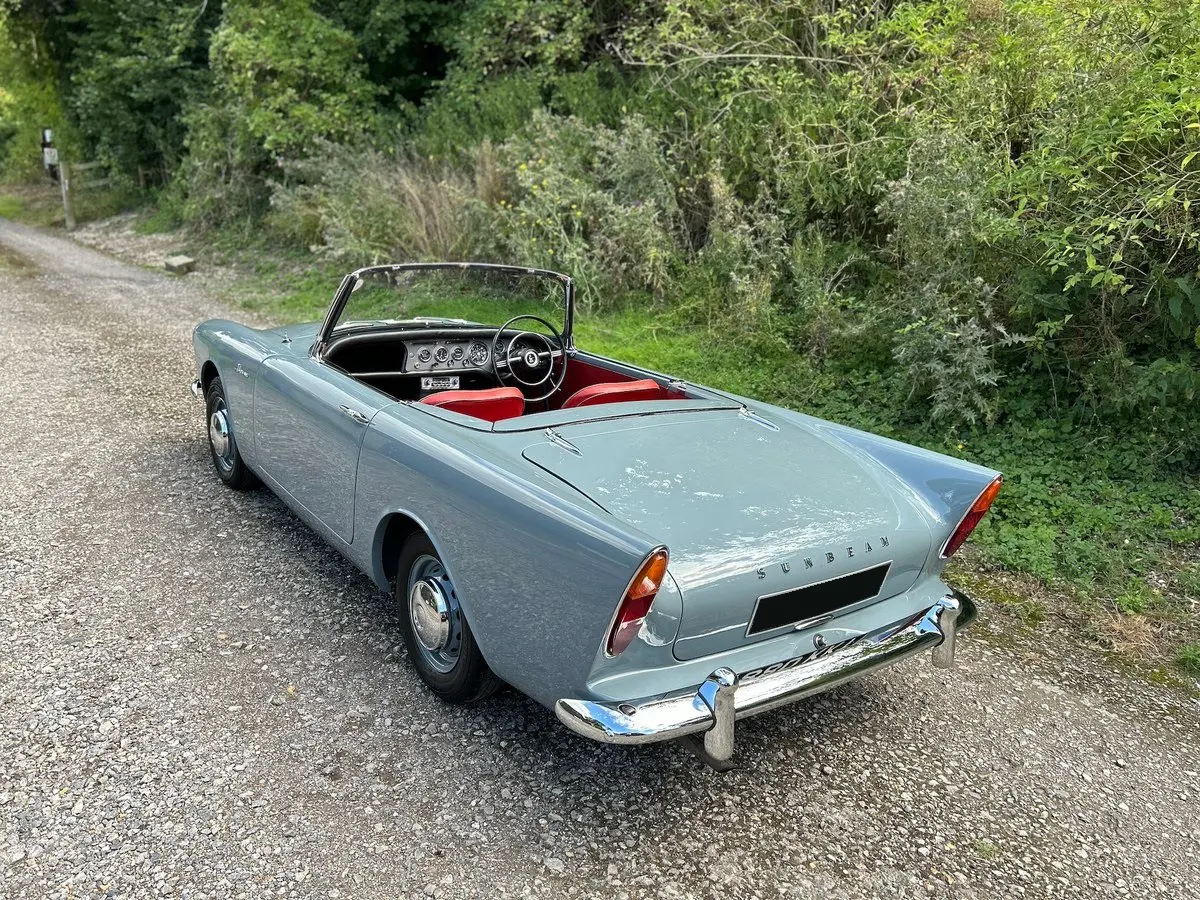UTTERLY DASHING – THE SUNBEAM ALPINE SERIES I
02 October 2024
A 1960 Sunbeam Alpine Series I is one of a select group of cars that looks poised for action even in repose. When new, it was the ideal vehicle for taking to the recently opened – and then speed-limit-free – M1, and the perfect way of describing it is “dashing”. This example, offered for sale by Robin Lawton (https://www.robinlawton.com/), reminds one of a world of blazers, cravats and having Kenneth More as one’s role model.

The Rootes Group began work on the Alpine in 1956, and Ken Howes devised the bodywork. In his words, the latest Sunbeam was:
looked upon as a completely new car that would be a break with the past. It was basically an intuitive design. I wanted a sports car that would be slightly ahead of the competition – projected into the future.
Rootes considered using the Sabre name before they decided to revive the Alpine badge, last used on the 1953-1955 90-based two-seater. The 2nd of July 1959 marked the Alpine’s launch in Cannes, and few could believe it shared the floor pan of the very non-sporting Hillman Husky. The top speed was 99 mph, power was from the Rapier’s 1,494cc engine, while Girling disc front brakes were a first for a Sunbeam.
Meanwhile, the body was well-planned and elegant – some enthusiasts prefer the more pronounced fins of the Series I-III Alpine – and the cleverly devised roof could be stowed entirely out of sight. The cabin featured a padded rear shelf that could double as a vestigial back seat. One magazine suggested there was room for a third adult passenger seated sideways.
Most notably, the Alpine’s specification included exterior door handles and winding windows, which were not found on the MGA Roadster. As I wrote in 2019:
Many a devotee of “traditional British sports cars” dropped their pipes in amazement and/or horror. How could any “sports car” dare to be equipped with exterior door handles and, worse still, the winding windows? Dash it all, such examples of decadence belonged on Vauxhall Crestas, Ford Zodiacs and other wide-boy vehicles rather than a manly two-seater!

To certain drivers, a British sports car with winding windows was as symbolic of the nation’s decline as teddy boys and The Goon Show. But Rootes management needed the Alpine to appeal to the corporate lawyer who wanted a chic convertible for those weekends at Lake Tahoe as much as Silverstone regulars who felt undressed without their driving gloves.
Besides, John Bolster of Autosport believed the Alpine handled “like a real sports car” and that “for the man who does not need a full four-seater, this little thoroughbred must exert a very strong appeal”. Motor Sport found it “the sort of fast, smart, pleasant-to-drive sporting car which many enthusiastic motorists will want to own”.
In addition, Motor Sport headlined their test “A car for the sporting bachelor”, which immediately evokes images of Leslie Phillips or Michael Medwin wearing a car coat and a flat hat en route to Goodwood. Nor, at £971 10s 10d, was the Alpine outrageously expensive. The keen motorist could invest £60 4s 2d in Laycock-de-Normanville overdrive. Other extras included a light-alloy hardtop at £60 and, for the would-be Stirling Moss, wire wheels at £38 5s.
Across the Atlantic, the great writer Tom McCahill of Mechanix Illustrated thought the Alpine “a real dream bucket, one that seems to have everything at the right price”. In addition, the rear bench was ideal for “a drunk friend who does not mind sprawling out across the entire seat”, the bodywork was “as sharp as a weasel’s teeth” and it was a “fun sports car”.
The 1.6-litre Series II replaced the Series I in 1960, and Alpine sales ended in 1968. This example really does look as though it has strayed from a Rank comedy film starring Leslie Phillips. Preferably including a scene of the Sunbeam overtaking James Robertson Justice’s pre-war Daimler.
With thanks to Robin Lawton for his time and permission to use the images in this blog.
